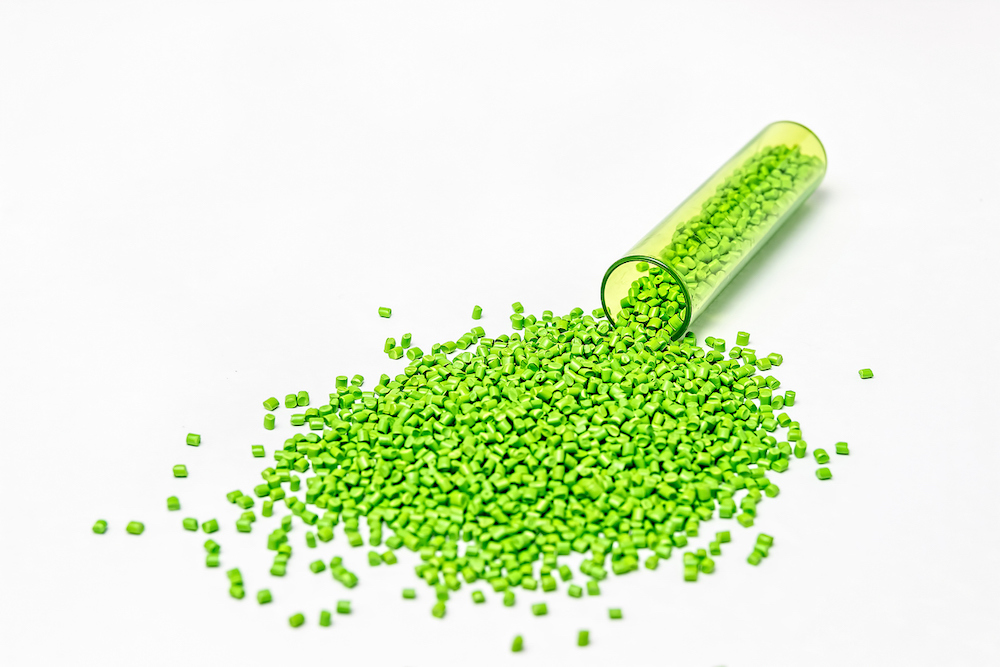One of the most exciting areas of development in the fiber industry going forward figures to be in identifying solutions to minimize the environmental impact of nonwovens, technical textiles and other fiber-based end products. With the European Union’s recent ban on certain single-use plastic products, similar legislation currently being considered in California, and public outcry over plastic-based pollution in general, many stakeholders in the fiber industry are focused on how to limit the impact of and/or reliance on plastic-based raw materials.
Microplastics, which are commonly found in the form of plastic fibers in the environment, have been increasingly discovered in the digestive tracts of aquatic animals. And much research is being conducted to determine the health impacts of microplastics, not only on marine life, but also on humans who consume shellfish and other marine-based food sources.1
It’s clear the fiber industry sees the future trickle down potential of plastic-based legislation leading from plastic bags and plastic straws to microplastics, which have a direct connection to plastic-based fibers. And while there are many promising solutions emerging on the market today – such as upcycling low-quality plastics to virgin-quality PET and biodegradable plastics, as well as alternatives to plastic-based fiber (For more details, see “The plastics industry – committed to change or defending the status quo?”) – there are just as many challenges emerging as the industry considers how to scale such solutions and integrate them within a complicated supply chain.
In an effort to shed some light on the way forward for the fiber industry, IFJ gathered a range of subject matter experts from leading fiber producers to participate in a roundtable discussion about the plastics challenge. We asked questions related to the framing of the plastics problem in general to regulatory concerns to the definition of plastics to infrastructure challenges and what the fiber industry of the future will look like.
The following exchange provides some perspective on how various stakeholders in the fiber industry view this issue, but certainly there is more to consider and discuss. If you have feedback on this roundtable Q&A and/or or suggestions for questions or related topics to consider, I encourage you to contact me directly at +1 919.459.3754 or mmigliore@inda.media. IFJ will be covering the plastics in the environment issue and potential challenges and solutions on an ongoing basis, and we welcome your thoughts.

Bernard Philipp Alowonou is vice president of global business management for Lenzing AG’s New Business Areas business unit.He is responsible for leading the development of the company’s strategy for industrial applications. He also oversees the establishment of the LENZING™ brand for industrial applications under Lenzing’s new brand architecture. Bernard has a bachelor’s degree in Industrial Management from the State University Stuttgart and an MBA from the University of Chicago, Booth School of Business.

Rahul Bansal is the general manager of nonwovens for Birla Cellulose, the pulp and fiber business unit of Aditya Birla Group. Bansal is responsible for global business development of Birla’s viscose staple fibers for nonwoven applications. Birla Cellulose is among the largest producers of viscos staple fibers, with viscose fiber and pulp plants in India, Thailand, China, Canada, Laos, Sweden and Indonesia.

Jürgen Eizinger is vice president of global business management for Lenzing AG’s Nonwovens business unit. He is in charge of the development and implementation of a variety of business strategies with a focus on driving the awareness of the VEOCEL™ brand and enabling a more sustainable and circular future for the nonwoven segment of Lenzing’s business.

Robert Green is the vice president of Performance Polymers for NatureWorks LLC. Robert has been with NatureWorks since 2002, where he has been involved in a broad range of applications for both IngeoTM fibers, as well as Ingeo packaging. Prior to joining NatureWorks LLC, Robert was employed with Wellman, Inc. for 11 years, holding a number of technical positions supporting a variety of PET fiber and resin activities.

Edmund (Eddie) Ingle is CEO & Chairman of Wellman International and also serves as CEO of the Indorama Ventures Recycling Group, a new vertical created within Indorama Ventures Ltd. to support branded customers and assist them to reach their PET recycled content goals. He is responsible for growing IVL’s global recycling footprint to support the new recycled content commitments made by the PET packaging and fiber industries.
Based on the programming at conferences and trade shows and the communications coming out of leading players in the industry, it’s clear that fiber-related businesses are taking the issue of plastics in the environment seriously. How does your company define the problem?
Bernard Philipp Alowonou: From a packaging industry perspective, the problem with using plastics is that, even after recycling, the material is still non-biodegradable. This leads to issues such as overflowing landfill sites, increased carbon footprint, and the fact that plastic is detrimental to the environment.
Plastics also creates serious problems for our marine environment. The accumulation of conventionally used synthetic fibers and plastics in the ocean accounts for 80 percent of all marine pollution.2 In light of this, Lenzing recently initiated a project in collaboration with two research partners in order to develop a sustainable solution for the marine industry – the 100 percent wood-based mussel nets with LENZING Lyocell fibers for aquatic farming, which aims to reduce the annual plastic quantity in the marine environment.
Lenzing supplies sustainable packaging offerings as a solution. Bio-based LENZING Lyocell fibers are certified biodegradable and compostable under industrial, home, soil and marine conditions, and can fully revert back to nature. Using Lenzing’s sustainable fibers only requires a small change for it to enter into supply chains and our daily lives, yet it will have a substantial environmental impact in the long run.
Rahul Bansal: We view the challenge posed by plastics to the environment as extremely serious.
Over a period, plastic materials have become an integral part of products like single-use plastics and disposable textiles. However, with the disposable product litter in the environment, and especially the microfibers found in ocean and water systems, the problem is now known to all and everyone understands the gravity of it, including the fiber producers, who are working hard with the industries they serve to find the right product solutions.
We look at this problem as critical, and we all need to collaborate, starting from raw materials and going right to the consumers.
“If we look at the objective of such regulations, especially related to single-use plastics and textiles, it is to reduce the impact on soil and especially marine life from the harmful impact of plastics, or the particles which remain non-decomposed.”
Jürgen Eizinger: From a nonwovens’ point of view, the problem of plastic pollution is an industry-wide challenge. It is important to ensure the production of high-quality products that also help to combat environmental issues by being more sustainable.
While the European Union (EU) Single-Use Plastics Directive calls for sustainable alternatives, wipes are considered one of the top 10 single-use plastic products contributing to marine litter. At Lenzing, we aim to build a label of trust for environmentally conscious consumers. What is more, we want to promote a holistic understanding about the benefits of our fibers in nonwoven products along the entire value chain.
Our focus is mainly on producing fibers for delicate purposes in beauty and personal care products ranging from moist toilet tissues to facial sheet masks to wipes. The EU Single-Use Plastics Directive calls for clearer labeling requirements that indicate any presence of plastics in wipes and other disposable items.
VEOCEL will continue to support a variety of initiatives and work closely with global organizations to drive transparency and increase sustainability in the wipes market.
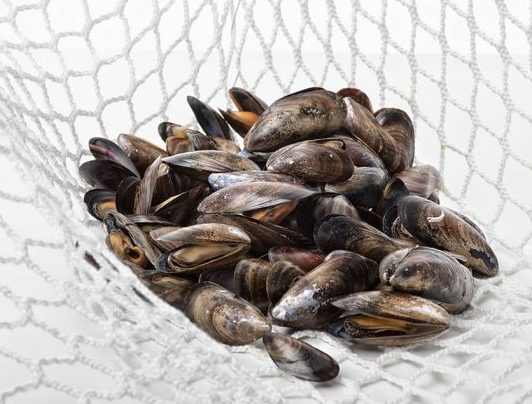
Robert Green: At NatureWorks, we have long believed our material offers a more sustainable option versus petrochemical-derived materials for a variety of applications. Where we have focused our efforts has been primarily on applications that also deliver a material performance benefit in addition to the sustainability benefits Ingeo biomaterials bring into applications and products.
We see thought-leaders like the Ellen MacArthur Foundation developing circular economy frameworks that companies and governments are adopting to manage the flow of plastics and other materials through our economy. These frameworks are going to be critical for tackling the issues that arise at the intersection of materials and the environment.
Edmund Ingle: As one of the world’s leading petrochemical producers, Indorama Ventures LTD (IVL) views the perception of plastics to be a natural evolution in our textile markets. As consumers become more aware of the impact of plastics on the environment, producers need to react to that. We at IVL believe that all stakeholders have a shared responsibility to deliver sustainable solutions, requiring a collaborative approach across the value chain. Plastic is a valuable material, evident from the breadth of use, and deserves respect, but we must earn the respect of the consumer when we say we will be part of the end-of-life solution. IVL recognizes that the limited amount of end-of-life circularity, in some end uses, is a key issue in the fiber market.
While fiber-related businesses do seem to be innovating around and investing in the concepts of sustainability and circularity, there is also concern about regulatory over-reach. What challenges do some of the regulatory initiatives around plastics in the environment – for example in California and the EU – present as the fiber industry aims to address the issue of plastics in the environment?
Edmund Ingle: Understandably, the uncertainty surrounding the potential impact of legislation may cause concern, but the market is demanding recycled material and regulation will be necessary to drive this. Consumer behavior is changing, with consumers no longer seeing recycling as sufficient, and they want to consume in a more sustainable way as well. To meet this demand for recycled content, recycling rates will need to increase. With clear and reasonable legislation, companies like IVL will be able to invest its capital, with a reasonable amount of risk, in recycling. With approximately half of annual plastic production destined for a single use-use product, the challenge is how we effectively structure the collection systems and processing of this material and channel it towards circular initiatives.
Robert Green: The primary challenge we see is properly defining the problem and related effects, as well as striking a balance between offering regulatory assistance in such a way that promotes innovative thinking without providing barriers to progress.
Jürgen Eizinger: With the EU’s Single-Use Plastics Directive, concrete steps are being taken to shine a light on the issue of hidden plastics in wipes. The labeling requirements will inform consumers of plastic content they were most likely not aware of and provide details on appropriate waste management options. Once the regulations are implemented, we hope this will be an important case study that other markets will follow and help to further ease the burden on both our environment and the waste industry.
Although plastics are an integral part of today’s industry, there is an increasing interest in biodegradable materials. The Single-Use Plastics Directive helps to accelerate changes in the industry. However, it is more and more obvious that not only government bodies drive the reduced usage of plastics in wet wipes, but also consumers are willing to make a change in favor of our ecosystem. This would not be effective without the combined effort of industry stakeholders and consumers. It is encouraging to see that everyone is working towards making a healthier planet.
Rahul Bansal: We welcome the regulations, which will help to push the industry to move fast on sustainability and circularity. The regulators and the industry have to work jointly to find the best available solutions and definitive timelines to move in the direction of circularity.
The regulators and the industry should ensure that all the facts and options are duly examined while large-scale regulatory decisions are taken.
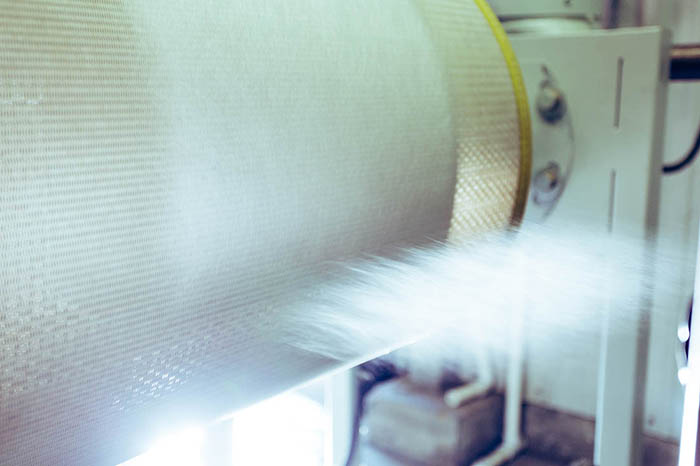
One of the discussions around plastics in the environment and how regulations are crafted is how to define plastics and definitions in general. How do you define plastic?
Robert Green: We agree with common definitions of plastics where it is a generic term for a wide range of synthetic or semi-synthetic materials that can be heated and formed. However, this term is not particularly specific when it comes to regulations where we like to see the impact or origins of materials defined as well.
Jürgen Eizinger: I believe change does take time and momentum must be built, but the world is moving in the right direction. We aim to support these transitions, with close partnerships across the value chain, not only from nonwovens but across the broader industries too. With the broader environmental awareness in the society, many stakeholders and consumers are seeking to avoid petroleum-based products. It is encouraging to see such a wide industry shift, and new technologies that now subscribe to supporting such efforts. With our biodegradable fiber solutions, we will assist industries across the board with their transitions away from conventional oil-based products.
Rahul Bansal: This is a very critical subject that requires absolute detailing and understanding of what is plastic and what is not. There have been multiple definitions of plastics used in the past for different purposes. The technical experts need to collaborate and put the right definition related to the broad objective of global sustainability. For example, there may have been some confusion to define even regenerated cellulosic polymers as plastics, even though these are sourced from and possess the same structure as natural wood and fibers.
We have to focus on the key objectives. If we look at the objective of such regulations, especially related to single-use plastics and textiles, it is to reduce the impact on soil and especially marine life from the harmful impact of plastics, or the particles which remain non-decomposed. Hence, the objective should be to define and curb/eliminate the materials that are not getting decomposed and harming the environment. There are well defined standards like ASTM 6400 / D5338 / 6691 / D5511 and similar EN / ISO standards, which define the compostability and biodegradability of the products. These can be used to define what is acceptable for a healthy environment.
There are enough technical studies and tests done at multiple levels, which have clearly proved that regenerated cellulosic fibers, like viscose and lyocell, are chemically the same cellulose as obtained from the wood source used to make them. Their bio-degradation results are also proven.
Hence, there should be no confusion on the definition of plastic. The target should be to curb/eliminate the raw materials which do not comply to the defined compostability standards, and the definition of plastics should be applied accordingly.
We will play our role in highlighting the issues and factors, helping the associations and regulators arrive at the right decision in this regard.
How concerned should the fiber industry be about the way regulations concerning plastics in the environment are defined and articulated? What can fiber-related businesses do to address regulatory ambiguity and how that might inadvertently impact the industry and/or distract from the ultimate goal of minimizing plastics in the environment?
Jürgen Eizinger: Manufacturers have become increasingly aware of the environmental harm that their plastic-based products are causing. The EU Single-Use Plastics Directive and other impending regulatory changes have led to an augmented business interest in finding alternatives early before it becomes mandatory. What is more, consumers now support bio-based alternatives at increasing rates, and with the power to dictate market trends, manufacturers will need to keep up with the changing demand.
As the world is reaching a critical point with its reliance on plastics, rather than focusing on regulation gaps, Lenzing continues to innovate to provide new eco-responsible technologies and initiatives.
Rahul Bansal: We are concerned on some key aspects of the regulations – like the definition of plastics having ambiguity – but at the same time we are confident that regulators will be taking all necessary measures to bring forth the necessary clarity.
We are working closely with independent technical experts on the subject to get their views, the industry associations, and the regulatory bodies to bring the required clarity to the subject. We have already submitted the published technical reports, independent test reports, and our internal studies on the subject.
We are confident that the scope and definition of plastics will get clearly defined by the committees in the implementation acts. This is extremely important to fulfill the basic purpose of the legislation.
Edmund Ingle: As an industry, we need to be agile in our response and proactive in our approach. There is no one solution, and the approach will require a combination of technological innovation and education. We need also to ensure that our voice is heard and that we influence decision making, and that means working with industry-led organizations like EDANA, who can represent us at the legislative level. Micro plastics, and micro fibers in our waterways and oceans are all relatively new environmental concerns that need to be studied.
Robert Green: We believe the fiber industry should stay in touch with what is happening in this space and work with key stakeholders who are developing the circular economy frameworks that will influence regulations. We have also already seen examples where consumer pressure to remove plastics in fabrics has resulted in real change. For example, teabags in the United Kingdom are switching away from polypropylene in response to petitions about plastic in tea.
In the end, innovation, collaboration, and thoughtful product design will be key to addressing the concerns around plastics and plastics in the environment. Many fiber and nonwoven applications are already made partially or completely from natural fibers. At NatureWorks we believe our Ingeo biomaterials can be a part of the solution to provide performance that historically was obtained via petrochemical-derived materials to complement sustainable attributes already part of many products via their natural fiber components.
As we consider circular economy solutions, infrastructure to enable recycling and reuse is a point that needs to be considered. What can and/or should be done to address the issue of infrastructure to enable more circular solutions in the fiber industry?
Rahul Bansal: There are certain products which are simpler and have a single raw material type. For such categories, there can be a simpler solution by promoting the compostable raw materials and/or creating infrastructure for recycling. However, many products like diapers are complex products having various raw material types. Recycling of such complex products is very challenging, and we are not sure how such products can be recycled even with the infrastructure in place. To us, it looks like moving to fully compostable products for such categories is the appropriate direction.
Entire industry value chains need to seriously discuss and propose practically implementable solutions and direction to address the environmental concerns.
Bernard Philipp Alowonou: The circular economy remains one of the most important alternatives to the traditional notion of production and disposal. The need for greater resilience in infrastructure supply chains is being recognized and is currently driving interest amongst industry operators to adapt. As this development progresses, it has great potential to be cost efficient, reduce waste, and lower carbon emissions.
Opportunities to improve resource efficiency tend to appear in an early stage of a project’s lifecycle, where the feasibility of projects and raw materials selection are evaluated and determined. Thinking ahead of recycling and reuse, Lenzing provides solutions that leave minimal impact on the environment using a closed-loop production process.
In addition to their potential to reduce waste at both ends of the product’s lifecycle, botanic fiber-based nets and reusable bags are becoming popular as their use requires little change from companies or consumers, which allows seamless incorporation into supply chains and the customers’ everyday lives. For example, Lenzing works with nets producer Verpackungszentrum Graz as well as retailers in Europe like Coop in Switzerland and REWE Group in Austria, to ensure that their sustainable alternatives conform to current packaging processes.
A company’s procurement policies are also an important drive in transitioning to more sustainable procedures. Furthermore, as a circular economy approach normally requires innovative and creative thinking, implementing more flexible company regulations can help speed up the adoption. In parallel, companies should also minimize risk by constantly delivering cross-team evaluations before an official implementation. New performance frameworks can also speed up adoption of new service models with suppliers and provide support in the case of any issues. Besides infrastructure, having a collaborative team across multiple divisions is also vital to ensure the circular economy approach is running at optimal levels within the company.
With an ever-increasing array of innovative sustainable packaging solutions that promise biodegradability without compromising on performance and the easy transition to an existing supply chain, companies no longer need to fear the changing regulatory environment surrounding single-use packaging. As companies continue to shift their focus away from plastic packaging, further innovations will follow, and higher demand will also increase the overall cost saving potential. Brand owners should consider the switch to sustainable wood-based fiber packaging, and thereby decrease their environmental footprint.
Edmund Ingle: Technologies currently exist to facilitate circular fiber initiatives. However, a key challenge presents in the design of product. The presence of multiple polymer types within fiber applications inhibits the potential to mechanically recycle. If designed optimally – ideally of one fiber type – the potential is greatly enhanced. Chemical recycling, although at early stage development, offers significant opportunity to improve fiber recycling. Collaboration across the value chain will be critical in terms of navigating the required infrastructure to capture this material.
Robert Green: The first step is understanding materials and the real possibilities with materials. No one after-use solution will fit all materials and products nor will it fit all geographies. Therefore, we believe that materials should have the flexibility to fit multiple after-use scenarios.
Partnerships and product design will also be a great influencer on the development of infrastructure. We need to partner with everyone from local governments to the after-use value chain of waste haulers, recyclers, composters, etc., to affect change in infrastructure. Likewise, we need to design products to make use of the materials already out in the market where possible. We need to be part of creating a sustainable economic loop or business case for materials recaptured after use.
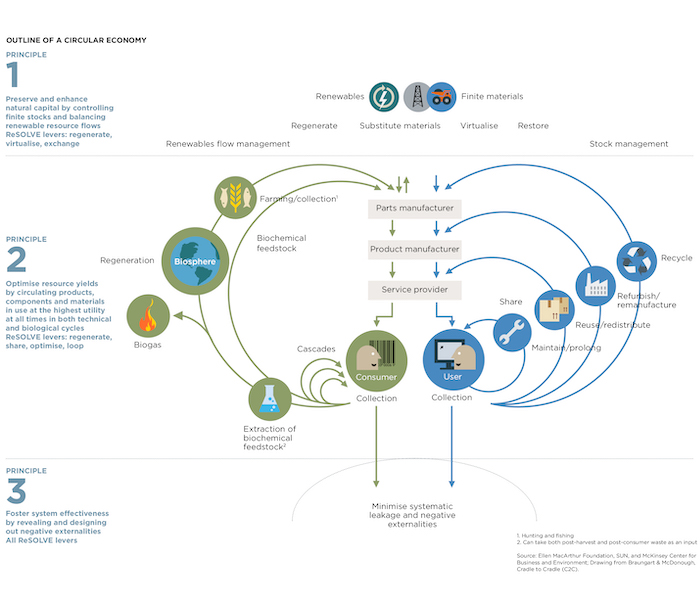
How does your company’s technology help address the plastics in the environment issue?
Robert Green: First, we believe that no plastics, bio-based or otherwise, should enter the environment through litter. Comprehensive collection and sortation systems are critical for enabling the capture of materials for recycle, reuse or composting. Our Ingeo biomaterials are uniquely suited to fit more after-use scenarios than many petrochemical-based materials with proven effectiveness in recycling, composting, anaerobic digestion, and even chemical recycling. However, no one after-use option fits all products, and it’s important to align product design with likely after-use scenarios.
Being made from renewable resources, the manufacture of Ingeo biomaterials also has a low carbon footprint. This is useful for companies seeking to meet carbon reduction goals and make an impact on climate change.
Rahul Bansal: We have been working with the value chain to address the environmental issue.
With our fibers being fully compostable, we are working closely with the value chain to understand key product requirements, develop compostable products to suit these requirements, and assist fiber selection to make compostable end products.
We have been focusing on products like sanitary pads, diapers and also wipes, and providing solutions to help make them fully compostable.
In this regard, we have achieved considerable success, and we are optimistic that such solutions will get high commercial acceptance in the end products on a large scale in the near future. The viscose fiber supply is also being geared-up to fulfill such additional requirements.
We are playing a significant role already – awareness is building – and we are facing the future with optimism. We need to build on this momentum now so as to ensure that in 10 to 20 years’ time, the world will be a different place – a greener, better and healthier place.
Bernard Philipp Alowonou: Our LENZING brand fibers provide sustainable, smart solutions, which are of botanic origin. Our cellulosic fibers, such as LENZING Modal or LENZING Lyocell, are effective substitutes to plastics for use in a number of everyday items, including, for example, shoes, twines, fruit and vegetable bags. Spun-dyed LENZING Modal Color fibers serve many net packaging requirements for brands and retailers, while fibrillated LENZING Lyocell Shortcut fibers remove fine particles during liquid filtration without the release of abrasive particles.
Jürgen Eizinger: The VEOCEL brand established itself as the ingredient brand of choice for brands and retailers who aim to provide consumers with sustainable convenience in nonwoven products. Beyond this, we also believe the brand can be an important vehicle for educating consumers. Our new certification criteria ensure that only 100 percent cellulosic and biodegradable materials can be blended with our fibers and transformed into final products featuring the VEOCEL logo. In this way, VEOCEL is striving to establish a label of trust within the nonwovens industry, allowing consumers to make conscious eco-friendly choices.
Edmund Ingle: With global PET recycling capacity, IVL recycles over 8.5 billion PET bottles per year. As a company we are committed to delivering responsible and sustainable growth through diversification of our portfolio and continuous exploration and development of new recycling technologies. We will be expanding our recycling efforts in the next decade to meet the needs of our customers, and much of the capital we spend will be on newer more efficient and effective recycling technologies that can increase the first quality yields from an increasingly contaminated supply. In response, recognizing plastic as a valuable resource and in response to global concern on environmental impact, IVL has recently launched a new rPET ingredient brand, DEJA. The objective of DEJA is to educate across the value chain on the potential to transform recycled PET into innovative useful products with a low carbon footprint, multiple times.
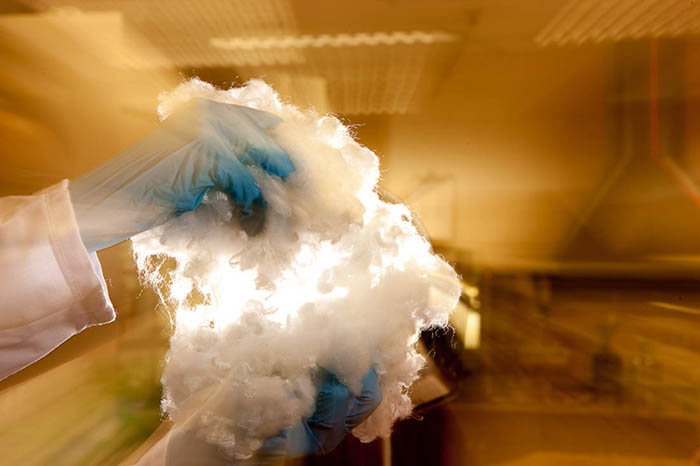
Looking ahead 10-20 years from now, how do you see fiber-related businesses having played a role in overcoming the plastics in the environment challenge?
Edmund Ingle: To drive change, it will require all stakeholders to work together. As fiber manufacturers we can influence this change through use of recycled materials, designing to recycle, optimizing product collection, and adopting new recycling technologies. Many companies are working on recycling the hard-to-recycle materials, such as multi-component fabrics, or highly contaminated materials, by bringing the polymers back to the monomer level. It may in the short term be expensive, but long term, as crude prices rise, the recycled materials that in the past were too expensive to process, may be more competitive, while at the same time sustainable. In the next five to ten years, new textile recycling technologies will be commercialized that will provide cost-effective solutions to end-of-life consumer products, and we at IVL expect to be utilizing these technologies.
Robert Green: Over the last few years, we have seen consumers becoming more knowledgeable and concerned about the environmental impact of products they use and have seen some great examples of businesses responding with innovations that meet that demand. In 10-20 years, we hope that fiber-related businesses have helped align sustainable sourcing of materials through to product design and after-use options where the performance of materials meets or exceeds the expectations of consumers. We believe our Ingeo biomaterials will be part of the solution that helps brands, retailers and consumers achieve robust sustainability goals while having even better performing products in a range of applications.
Rahul Bansal: As raw materials play a key role in defining the compostability and sustainability of the end products, within next 10-15 years we see even greater and faster shift to the sustainable raw materials for most of the textiles and single-use nonwoven products.
Bernard Philipp Alowonou: First and foremost, it comes down to generating awareness at the consumer’s end. Through building traceability in fibers, it will become easier for consumers to be conscious of their own carbon footprint. Downstream brand partners will thus be positively influenced to support sustainable fibers, thereby prompting an industry-wide shift.
In this context, we envision Lenzing also in a role to initiate and establish new business models along the value chain, together with existing and new partners.
Jürgen Eizinger: Products made with Lenzing fibers are reaching new markets every day and the industries we are in are evolving. Leveraging technological innovation, I believe fiber-related businesses will be able to provide many more alternative options for various industry segments that could replace a certain amount of plastic used. By means of an extended collaboration between the industry and brands, we will be able to educate and provide more guidance for consumers on how to identify environmentally friendly products. We are playing a significant role already – awareness is building – and we are facing the future with optimism. We need to build on this momentum now so as to ensure that in 10 to 20 years’ time, the world will be a different place – a greener, better and healthier place.
References:
- “We Know Plastic Is Harming Marine Live. What About Us?” National Geographic, June 2018, https://www.nationalgeographic.com/magazine/2018/06/plastic-planet-health-pollution-waste-microplastics/.
- “Humans have made 8.3 billion tons of plastic. Where does it all go?” PBS News Hour, July 2017, https://www.pbs.org/newshour/science/humans-made-8-3-billion-tons-plastic-go.


